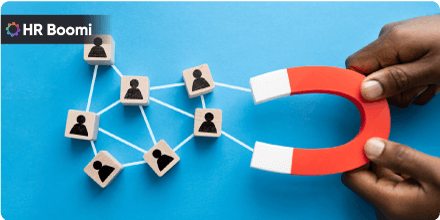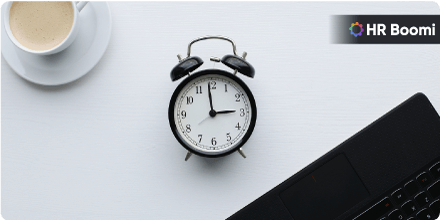
Table of Contents
Performance appraisal is a critical process in organizations to evaluate employee performance, provide feedback, and drive growth. While traditional methods have been highly effective for years, the evolving dynamics of the modern workplace call for more innovative and effective approaches. Modern performance appraisal methods offer a fresh perspective, focusing on continuous improvement, employee engagement, and aligning individual goals with organizational objectives. This article explores various modern performance appraisal methods that organizations can leverage to enhance employee development, engagement, and overall organizational success.
Modern Performance Appraisal Methods
1. 360-Degree Feedback
360-degree feedback is a method that involves gathering input from various sources, including supervisors, peers, subordinates, and even customers. This multi-rater feedback provides a broader and more balanced perspective on an employee’s performance. By incorporating diverse viewpoints, it offers a comprehensive assessment that goes beyond a single individual’s evaluation. 360-degree feedback encourages self-awareness, fosters teamwork, and promotes employee growth by identifying strengths and areas for improvement from different perspectives.
2. Management by Objectives (MBO)
MBO is a goal-oriented approach to performance appraisal. It involves collaborative goal setting between employees and managers, aligning individual objectives with the organization’s goals. Through regular performance discussions and progress tracking, MBO ensures clarity of expectations and empowers employees to take ownership of their performance. It emphasizes the importance of setting specific, measurable, attainable, relevant, and time-bound (SMART) goals. By focusing on results and outcomes, MBO promotes a results-driven culture and motivates employees to achieve their targets.
3. Behaviorally Anchored Rating Scales (BARS)
BARS combine qualitative and quantitative elements to evaluate employee performance. This method uses predefined behavioral anchors or examples to assess performance against specific criteria. By providing clear behavioral descriptions of different performance levels, BARS reduce subjectivity in evaluations. It offers more detailed feedback and helps employees understand how their behaviors align with desired performance standards. BARS make evaluations more objective and transparent, enabling managers to provide specific feedback for improvement.
4. Continuous Performance Management
Continuous performance management is a shift from the traditional annual performance review model. It emphasizes ongoing feedback and coaching throughout the year, rather than relying solely on an annual review. Regular check-ins and performance discussions enable real-time course corrections, employee development, and goal alignment. Continuous performance management fosters a culture of open communication and supports employee growth by addressing issues and providing guidance in a timely manner. It encourages regular performance conversations that focus on strengths, development areas, and career aspirations.
5. Check-Ins and Real-Time Feedback
Check-ins and real-time feedback are informal conversations between managers and employees that occur on a regular basis. These interactions allow for immediate feedback, recognition, and support. Check-ins provide opportunities to discuss current projects, address challenges, set priorities, and align expectations. Real-time feedback helps employees understand their progress, areas for improvement, and achievements in the moment. These practices promote employee engagement, address concerns promptly, and build strong manager-employee relationships based on open and continuous communication.
6. Peer-to-Peer Feedback
Peer-to-peer feedback involves soliciting feedback from colleagues and peers within the organization. This approach encourages a collaborative and inclusive work environment, where employees receive constructive input from those who work closely with them. Peer feedback enhances teamwork, employee development, and performance improvement. It provides a different perspective on an individual’s performance and fosters a culture of continuous learning. By promoting peer feedback, organizations tap into the collective intelligence and diverse experiences of their employees.
7. Gamification and Performance Tracking
Gamification integrates game-like elements into performance tracking systems. It leverages technology to create engaging and interactive platforms where employees can set goals, track progress, and earn rewards. Gamification enhances motivation, fosters healthy competition, and makes performance tracking more enjoyable. By introducing elements such as badges, leaderboards, and rewards, organizations can incentivize and recognize high performance. Gamification encourages employees to take an active role in monitoring their progress and achieving targets.
Benefits of Using Modern Performance Appraisal Methods
Modern performance appraisal methods offer numerous benefits for organizations and employees alike. Let’s explore some of the key advantages:
Frequent Feedback
Modern appraisal methods prioritize ongoing feedback, allowing employees to receive guidance and support in real-time. Instead of waiting for annual reviews, employees can benefit from regular check-ins and discussions about their performance. This timely feedback enables them to make necessary adjustments, capitalize on strengths, and address any areas of improvement promptly.
Feedback from Various Sources
One of the significant advantages of modern performance appraisal methods, such as 360-degree feedback, is the inclusion of input from multiple sources. Employees receive feedback not only from their supervisors but also from peers, subordinates, and even customers. This diverse feedback provides a holistic view of their performance, offering a more comprehensive understanding of their strengths and areas for growth.
Real-time Performance Tracking
Modern methods often incorporate technology-driven tools that facilitate real-time performance tracking. Through software platforms and dashboards, both employees and managers can monitor progress, track goals, and identify potential roadblocks. Real-time performance tracking promotes accountability, empowers employees to take ownership of their targets, and enables managers to provide timely support and guidance.
Enhanced Teamwork and Collaboration
Modern appraisal methods, such as peer-to-peer feedback and continuous performance management, foster a culture of teamwork and collaboration. By encouraging employees to provide feedback and support to their colleagues, these methods strengthen relationships, improve communication, and create a sense of collective responsibility. Employees feel valued and connected, leading to increased engagement and a more cohesive work environment.
Increased Transparency in Evaluations
Traditional appraisal methods often suffer from subjectivity and lack of transparency. In contrast, modern methods focus on clear criteria and behavioral indicators, reducing bias and increasing transparency in evaluations. Employees have a better understanding of the expectations and standards against which they are assessed. This transparency promotes fairness, motivates employees to strive for excellence, and builds trust within the organization.
Conclusion
Modern performance appraisal methods provide organizations with more effective ways to assess, develop, and engage their employees. By embracing approaches such as 360-degree feedback, MBO, continuous performance management, and gamification, organizations can create a culture of continuous improvement and empower their workforce. It is essential for organizations to adapt to these modern methods to foster growth, productivity, and overall success.
Recent Posts
-

In-house vs. Outsourced Payroll: Pros and Cons
-

Mastering Talent Retention: A Corporate Challenge
-

What is employer branding and how to apply it in your company?
-

The Significance of Employee Communication Within
-

What is time management and why is it important?
-

Net salary: what is it and how is it calculated?
-

Enhancing Employee Experience: Strategies for Excellence
-

10 Best Gifts to Boost Sales Channels
